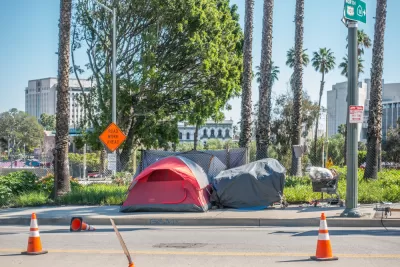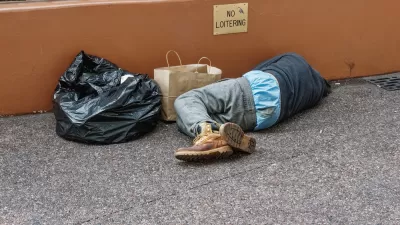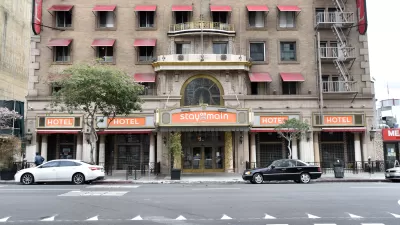There won't be many places left to sleep for the massive population of homeless living in the city of Los Angeles.

"A plan under consideration at City Hall would ban sleeping on streets and sidewalks within 500 feet of schools, parks, day-care facilities and some popular venues, eliminating at least a quarter of Los Angeles for homeless people trying to bed down at night," according to an L.A. Times feature by Matt Stiles, Ryan Menezes, and Emily Alpert Reyes.
The article includes an interactive map to illustrate the scope of the law, created by analysis performed by the L.A. Times team. In the whole city, there are 836 parks, 1,482 public and private schools, 1,161 day-care centers, nine special venues, and 43 homeless services that would be subject to a 500-foot buffer if the law is approved.
"Taken together, the buffers cover 124 square miles, about a quarter of the city," according to the article. "The estimate almost certainly understates the proposal's full potential."
The map allows analysis in the aggregate as well as at the neighborhood level. The article provides case studies in Venice, Hollywood, Koreatown, Downtown, Skid Row, and more.
If approved, the law would be the latest legal setback for the rights of the homeless to sleep on the streets. Los Angeles recently prohibited sleeping in cars, vans, and RVs, for instance.
FULL STORY: L.A. might ban homeless people from sleeping on many streets. What about your block?

Planetizen Federal Action Tracker
A weekly monitor of how Trump’s orders and actions are impacting planners and planning in America.

Maui's Vacation Rental Debate Turns Ugly
Verbal attacks, misinformation campaigns and fistfights plague a high-stakes debate to convert thousands of vacation rentals into long-term housing.

San Francisco Suspends Traffic Calming Amidst Record Deaths
Citing “a challenging fiscal landscape,” the city will cease the program on the heels of 42 traffic deaths, including 24 pedestrians.

Amtrak Rolls Out New Orleans to Alabama “Mardi Gras” Train
The new service will operate morning and evening departures between Mobile and New Orleans.

The Subversive Car-Free Guide to Trump's Great American Road Trip
Car-free ways to access Chicagoland’s best tourist attractions.

San Antonio and Austin are Fusing Into one Massive Megaregion
The region spanning the two central Texas cities is growing fast, posing challenges for local infrastructure and water supplies.
Urban Design for Planners 1: Software Tools
This six-course series explores essential urban design concepts using open source software and equips planners with the tools they need to participate fully in the urban design process.
Planning for Universal Design
Learn the tools for implementing Universal Design in planning regulations.
Heyer Gruel & Associates PA
JM Goldson LLC
Custer County Colorado
City of Camden Redevelopment Agency
City of Astoria
Transportation Research & Education Center (TREC) at Portland State University
Jefferson Parish Government
Camden Redevelopment Agency
City of Claremont





























